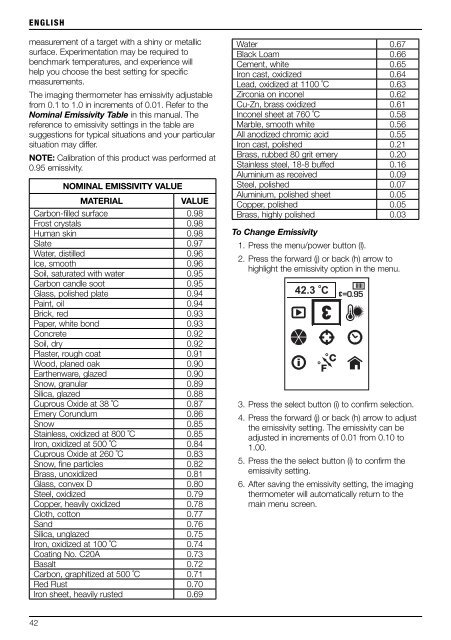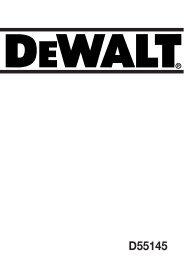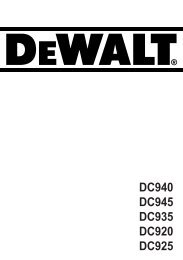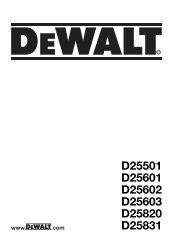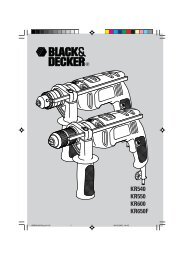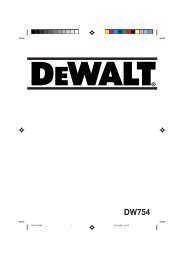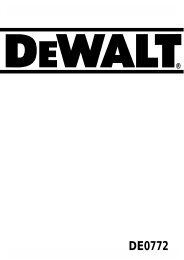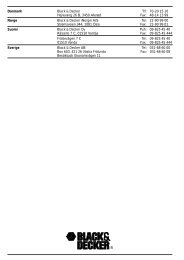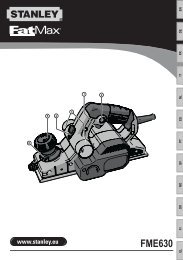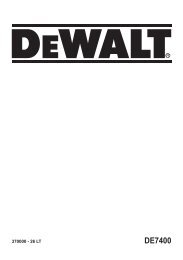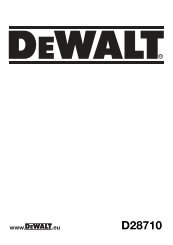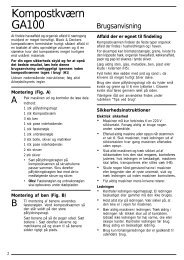N170801 man imaging therm DCT416 Euro.indd - Service
N170801 man imaging therm DCT416 Euro.indd - Service
N170801 man imaging therm DCT416 Euro.indd - Service
Create successful ePaper yourself
Turn your PDF publications into a flip-book with our unique Google optimized e-Paper software.
ENGLISH<br />
measurement of a target with a shiny or metallic<br />
surface. Experimentation may be required to<br />
benchmark temperatures, and experience will<br />
help you choose the best setting for specific<br />
measurements.<br />
The <strong>imaging</strong> <strong>therm</strong>ometer has emissivity adjustable<br />
from 0.1 to 1.0 in increments of 0.01. Refer to the<br />
Nominal Emissivity Table in this <strong>man</strong>ual. The<br />
reference to emissivity settings in the table are<br />
suggestions for typical situations and your particular<br />
situation may differ.<br />
NOTE: Calibration of this product was performed at<br />
0.95 emissivity.<br />
NOMINAL EMISSIVITY VALUE<br />
MATERIAL VALUE<br />
Carbon-filled surface 0.98<br />
Frost crystals 0.98<br />
Hu<strong>man</strong> skin 0.98<br />
Slate 0.97<br />
Water, distilled 0.96<br />
Ice, smooth 0.96<br />
Soil, saturated with water 0.95<br />
Carbon candle soot 0.95<br />
Glass, polished plate 0.94<br />
Paint, oil 0.94<br />
Brick, red 0.93<br />
Paper, white bond 0.93<br />
Concrete 0.92<br />
Soil, dry 0.92<br />
Plaster, rough coat 0.91<br />
Wood, planed oak 0.90<br />
Earthenware, glazed 0.90<br />
Snow, granular 0.89<br />
Silica, glazed 0.88<br />
Cuprous Oxide at 38 ˚C 0.87<br />
Emery Corundum 0.86<br />
Snow 0.85<br />
Stainless, oxidized at 800 ˚C 0.85<br />
Iron, oxidized at 500 ˚C 0.84<br />
Cuprous Oxide at 260 ˚C 0.83<br />
Snow, fine particles 0.82<br />
Brass, unoxidized 0.81<br />
Glass, convex D 0.80<br />
Steel, oxidized 0.79<br />
Copper, heavily oxidized 0.78<br />
Cloth, cotton 0.77<br />
Sand 0.76<br />
Silica, unglazed 0.75<br />
Iron, oxidized at 100 ˚C 0.74<br />
Coating No. C20A 0.73<br />
Basalt 0.72<br />
Carbon, graphitized at 500 ˚C 0.71<br />
Red Rust 0.70<br />
Iron sheet, heavily rusted 0.69<br />
42<br />
Water 0.67<br />
Black Loam 0.66<br />
Cement, white 0.65<br />
Iron cast, oxidized 0.64<br />
Lead, oxidized at 1100 ˚C 0.63<br />
Zirconia on inconel 0.62<br />
Cu-Zn, brass oxidized 0.61<br />
Inconel sheet at 760 ˚C 0.58<br />
Marble, smooth white 0.56<br />
All anodized chromic acid 0.55<br />
Iron cast, polished 0.21<br />
Brass, rubbed 80 grit emery 0.20<br />
Stainless steel, 18-8 buffed 0.16<br />
Aluminium as received 0.09<br />
Steel, polished 0.07<br />
Aluminium, polished sheet 0.05<br />
Copper, polished 0.05<br />
Brass, highly polished 0.03<br />
To Change Emissivity<br />
1. Press the menu/power button (l).<br />
2. Press the forward (j) or back (h) arrow to<br />
highlight the emissivity option in the menu.<br />
3. Press the select button (i) to confirm selection.<br />
4. Press the forward (j) or back (h) arrow to adjust<br />
the emissivity setting. The emissivity can be<br />
adjusted in increments of 0.01 from 0.10 to<br />
1.00.<br />
5. Press the the select button (i) to confirm the<br />
emissivity setting.<br />
6. After saving the emissivity setting, the <strong>imaging</strong><br />
<strong>therm</strong>ometer will automatically return to the<br />
main menu screen.


